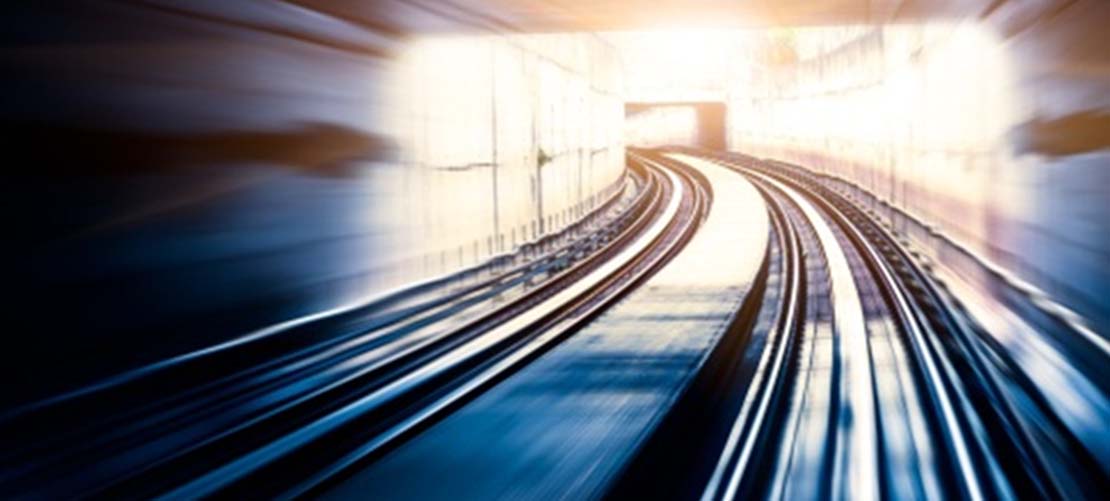Crossrail: complexities of large infrastructure projects

Today, 24 May 2022, sees the opening of the new Crossrail railway under London. For the first time, people will be able to travel directly by rail from Paddington to Canary Wharf and Abbey Wood, opening up new, quicker, journey opportunities and creating more east-west capacity across London to take pressure off existing tube lines. And this is only the first stage: eventually the new railway will connect to Network Rail's existing railway, allowing more direct journeys from Reading, Maidenhead and Heathrow to the west and from Shenfield to the east. It's a big day for the railway.
Crossrail vs Elizabeth line?
So what's the difference between "Crossrail" and the "Elizabeth line"? The simple answer is that one is the railway infrastructure and the other is the passenger service that operates on the railway infrastructure. Upon completion of the project, Elizabeth line services will use the new Crossrail railway, Network Rail's existing railway and, for those services going to Heathrow airport, Heathrow's railway.
Transport for London (TfL) has established a new entity, Rail for London (Infrastructure) Limited, to manage the new railway infrastructure between Paddington, Pudding Mill Lane and Abbey Wood. Part of the reason for this will be to facilitate access to the railway. There are legal requirements to keep separate the "essential functions" of capacity allocation (who you allow to use your track) and charging (how much you charge them for doing so).
These requirements were pioneered in the UK and eventually made their way into European law, becoming stricter over time. The intention behind this is to promote competition on the railway and avoid the potential situation where the manager of railway infrastructure only sells access to their sister company who operates trains. It is also intended to avoid measures being put in place to discourage other operators from using the track. Put simply, if there's available track capacity then anyone should be able to use it if they have compatible trains and staff.
Isn't this really a tube line?
There has been plenty of online debate about whether the new Crossrail railway is really just a tube line – and branding it the "Elizabeth line" gives that impression (if you can ignore the surplus "line"). There will be high frequency services and plenty of connections to the existing tube network. In many respects, it looks like a tube operation.
However, this is actually the first time that TfL will be responsible for managing regulated heavy rail infrastructure. Unlike the tube network which is largely unregulated, it will be fully regulated meaning, for example, that access contracts must be approved by the regulator, the Office of Rail and Road (ORR). As things currently stand, the structure is more like London Overground than the Victoria line.
This does seem odd and the "on the rail" operation may seem much closer to the tube. The railway itself is urban/suburban in nature and is intended to offer a metro-like service to transport large numbers of people quickly across the capital. A "declaration of specialised infrastructure" has been made giving priority in the allocation of track capacity to high passenger capacity metro services. Taking a step back, there seems to be a good argument that the new Crossrail railway itself shouldn't be captured in the same way as the wider national network operated by Network Rail. Full regulation increases costs and administration and appears disproportionate given the nature of the proposed operation. With Brexit having occurred, together with the Williams-Shapps Plan for Rail (the Williams-Shapps Plan) and the Transport Bill announced in the Queen's Speech opening up railways legislation to scrutiny, this seems to be an area which is ripe for reform.
Vertical integration?
The Williams-Shapps Plan speaks about bringing track and train operations closer together. TfL is already an excellent example of how this can work within the existing legal framework – with Elizabeth line services procured and managed by TfL. The TfL concession model is one recognised in the Williams-Shapps Plan. Agile management of existing concessions in-life has also contributed to their success. Keeping those "essential functions" separate is what is key in the current legal and regulatory framework.
This is also seen in the Core Valley Lines in Wales, where Seilwaith Amey Cymru / Amey Infrastructure Wales Limited manages the infrastructure, with Transport for Wales (as well as other operators) operating services over that infrastructure. Even prior to the transition of passenger services into Transport for Wales, this separation was in place; however there remains greater alignment between track and train. Closer alignment could also be achieved through alliancing arrangements between infrastructure manager and train operator.
So some of the aims of the Williams-Shapps Plan can already be achieved under the existing legal framework. We will have to see how these existing frameworks fit into the new industry model and the future industry framework, particularly with the inception of Great British Railways.
Top tips for rail infrastructure projects
For those looking to promote a rail infrastructure project, here are some top tips to consider:
- Will it be regulated?: consider the regulatory status of the new infrastructure now: there are pros and cons to full regulation. It may be appropriate to seek an exemption from some or all of the relevant regulatory framework – and the time to do that is before the project is given the go-ahead. Whilst no one can predict changes in law and regulation – and of course we are expecting plenty of that over the next few years with the Williams-Shapps Plan for Rail being implemented – considering the implications of the current legal and regulatory framework allows you to better prepare. Regulation can be both a blessing and a curse: certainty of a regulatory framework can help give confidence of revenue flows, which may allow finance to be raised. However, it does increase costs and administration.
- Plan early: whilst in the development stage a lot of focus is rightly given to getting the project and construction documentation in place, an eye needs to be given to the future. Important decisions are taken at the development stage which may impact what you can do with the infrastructure down the line. Plan for this early and expressly set out future options as part of business cases to give you as much flexibility as possible.
- Keep an eye out: this is an area for reform through the Transport Bill, so could well change in future. The ORR's recent consultation on an investment recovery charge for High Speed 2 (which can be found here) anticipates that the legal framework may well change, but decisions needed to be made based on the current legal framework. Project promoters will need to keep on top of reform in this area to make sure they are taking the right steps from the inception of the project to keep their options open down the line.
Crossrail – and the Elizabeth line service – has been a long time coming and we are excited to see it finally arrive. This is the first of a number of stages intended to deliver even better cross-London connectivity, improve the service and create new journey opportunities. Railway projects can have huge beneficial impacts on both users of the services and the communities they serve. If carefully implemented, they also offer opportunities for external investment. With an industry costs challenge following very significant public investment into the industry during the pandemic, now should be the time to encourage more private investment into railway infrastructure projects. There are ways of doing this – the key message is to think about it early.



